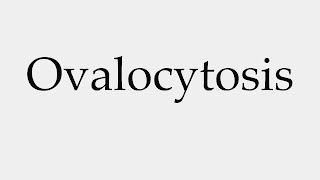 |
| ovalocytosis - www.healhtnote25.com |
Ovalocytosis
is
one of the blood disorders characterized by red blood cells that are mostly
elliptical (Palek & Lambert 1990). The term is also most often used to
refer to blood disorders called South-East Asian ovalocytosis (SAO).
More specifically, the
characteristics of ovalocytosis are red oval and diameter red blood cells that
contain hemoglobin. The midline will separate the pale area (the concave part)
into 2 parts (O'Donnell et al. 1998). The ratio for his innovation is approximately
longer: more than 1: 1 width and less than 2: 1.
SAO is commonly found in
indigenous Melanesian and Malayan peoples, then extends further to Southeast
Asia, such as Malaysia, Papua New Guinea, the Philippines and Indonesia (Liu et
al., 1990, Jarolim et al. 1991, Jones et al., 1991, Schofield et al 1992,
Takeshima et al., 1994).
Molecular studies found that
the cause of SAO was a deletion in the 400th to 408th (27 bp) codon in the
anion exchanger 1 (AE1) gene located on chromosome 17. The gene encoding this
band 3 protein had a mutation in exon 11. Due to deletions on the codon, the 9
amino acids can not be expressed. The amino acids are: alanine (A),
phenylalanine (F), serine (S), proline (P), glutamine (Q), valine (V), leucine
(L), alanine (A), and alanine (A) . The loss of nine amino acids occurs at the
boundary between the cytoplasmic domain and the first segment of transmembrane
protein band 3 (Liu et al. 1990, Jarolim et al., 1991). According to Mohandas
et al. (1992) in SAO patients, the resulting band 3 proteins increased cell
membrane rigidity (decreased deformability). This possibility is due to the
strong bonding of the ankirine to the mutated molecule.
SAO is derived autosomally
dominant. The positive individuals of SAO are heterozygotes and until now the
medical world and scientists have not found individuals with the homozygous
gene. It is estimated that individuals with homozygous alleles for SAO are
lethal (Jarolim et al., 1991, Liu et al., 1994, Allen et al., 1999). Until now,
has not found the fact that SAO gives a harmful effect to the sufferer.








0 Comments:
Post a Comment